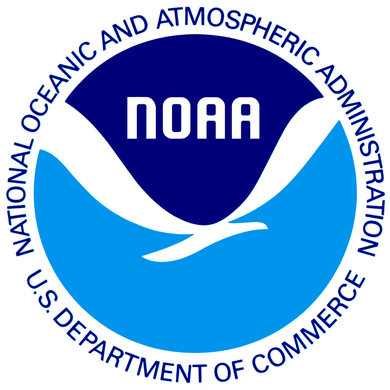Agency or authority
What this permitting pathway covers
The Suisun Marsh Habitat Management, Preservation, and Restoration Act (SMP) addresses user conflicts in Suisun Marsh with a multi-stakeholder approach to the restoration of tidal wetlands and the management of managed wetlands. The SMP includes both tidal restoration activities, and managed wetland operations and maintenance activities to be permitted under a Regional General Permit or Letter of Permission. Reclamation will provide cost‐share funding for operation and maintenance of the water monitoring and management facilities owned and operated by California Department of Water Resources (DWR) in the Suisun Marsh in accordance with the Suisun Marsh Preservation Agreement. Reclamation will also provide cost-share funding for the Preservation Agreement Implementation Fund that will provide funding for various managed wetland enhancement actions.
Regional General Permit (RGP) 3 – Suisun Marsh Managed Wetlands Operations and Maintenance Project authorizes 29 types of maintenance activities within Suisun Marsh. Most maintenance actions authorized with RGP 3 are associated with the repair and maintenance of existing levees and replacement of water control structures. Table 2 on page 66 of the PBO presents a complete list of repair and maintenance activities included in RGP 3. In addition to maintenance activities, RGP 3 authorizes installation of brush boxes as alternative bank protection on exterior levees.
Applicable locations
The action area encompasses 116,000 acres in Suisun Marsh (Figure 1) in Solano County, California. It is bounded to the west, north, and east by hills, and to the south by Suisun, Grizzly, and Honker bays. Montezuma Slough, the largest slough in the action area, runs from east to west between the Sacramento-San Joaquin Delta and Suisun Bay. The second largest slough in the action area is Suisun Slough, which essentially splits the marsh into eastern and western portions.
Permit documents
Species covered
- Sacramento River winter-run Chinook salmon ESU (Oncorhynchus tshawytscha)
- Central Valley spring-run Chinook salmon ESU (Oncorhynchus tshawytscha)
- Central California Coast steelhead DPS (Oncorhynchus mykiss)
- Central Valley steelhead DPS (Oncorhynchus mykiss)
- North American green sturgeon southern DPS (Acipenser medirostris)
Activities covered
The covered actions in Suisun Marsh include:
(1) operation and maintenance of managed wetland structures,
(2) maintenance dredging activities, and
(3) wetland restoration.
Although RGP 3 only authorizes maintenance of managed wetland facilities, maintenance at water control facilities (i.e., tidal gates and culverts) allows for subsequent operations. As such, operations are interdependent and interrelated to RGP 3 maintenance activities, and operation of water control facilities are considered in this biological opinion.
See page 3 of the PBO for more details on the covered actions, and Table 2 on page 66 of the PBO for a list of covered maintenance activities for managed wetland within the Suisun Marsh plan to be authorized using RGP 3.
Under the SMP, both tidal restoration and managed wetland activities will proceed concurrently. Beginning in year 11 of the 30-year program, managed wetland activities under RGP 3 and the letter of permission (LOP) will only be permitted by the Corps if at least one third of the total restoration activities are implemented. Beginning in year 21 of the program, managed wetland activities under RGP 3 and the LOP will only be permitted by the Corps if at least two thirds of the total restoration activities are implemented. Assessment of program implementation and re-issuance of Corps authorizations in 10-year increments will ensure that restoration efforts compensate for impacts and contribute toward tidal marsh habitat restoration throughout the plan implementation.
Application Tips and Resources
The Corps, Reclamation, and Suisun Resource Conservation District (SRCD) must undertake measures to minimize harm to listed salmonids and green sturgeon resulting from work on exterior levees. The following terms and conditions implement this reasonable and prudent measure:
- The NMFS Santa Rosa Area Office must be notified by letter or email message stating the project commencement date, at least 14 days prior to implementation.
- NMFS employee(s) or any other person(s) designated by NMFS must be allowed access to SMP work sites to accompany field personnel during activities described in this opinion.
- A biologist or on-site monitor must evaluate each site during project implementation to document project actions for the purpose of identifying any condition that could adversely affect salmonids, green sturgeon, or their habitat. Whenever conditions are identified that could adversely affect salmonids, green sturgeon, or their habitat, in a manner not described in this opinion, NMFS shall be immediately notified by contacting biologist Daniel Logan at (707) 575-6053 or dan.logan@noaa.gov.
The Corps, Reclamation, and SRCD must undertake measures to ensure tidal wetland restoration projects implemented by the SMP are designed to avoid and minimize harm to listed salmonids and green sturgeon during construction, and provide long-term benefits to listed fish and critical habitat. The following terms and conditions implement this reasonable and prudent measure:
- For each proposed tidal wetland restoration project, draft project-specific restoration design plans (65-90 percent design level) must be submitted to NMFS for review and written approval at least 120 days prior to initiation of construction.
- The draft project plans for each tidal wetland restoration project shall be submitted to: NMFS Santa Rosa Area Office Attention: Supervisor of Protected Resources Division, 777 Sonoma Avenue, Room 325, Santa Rosa, California, 95404-6528


